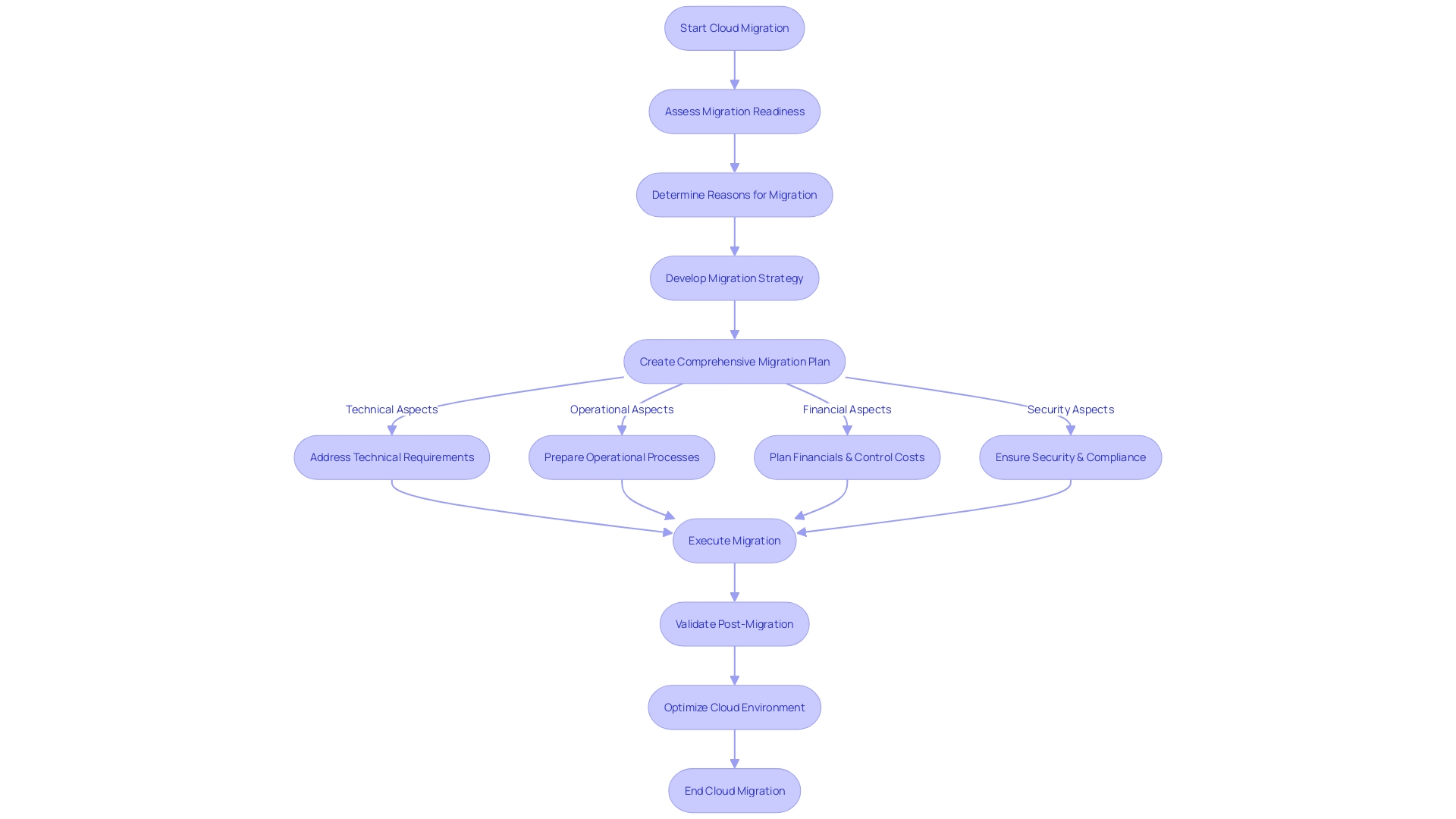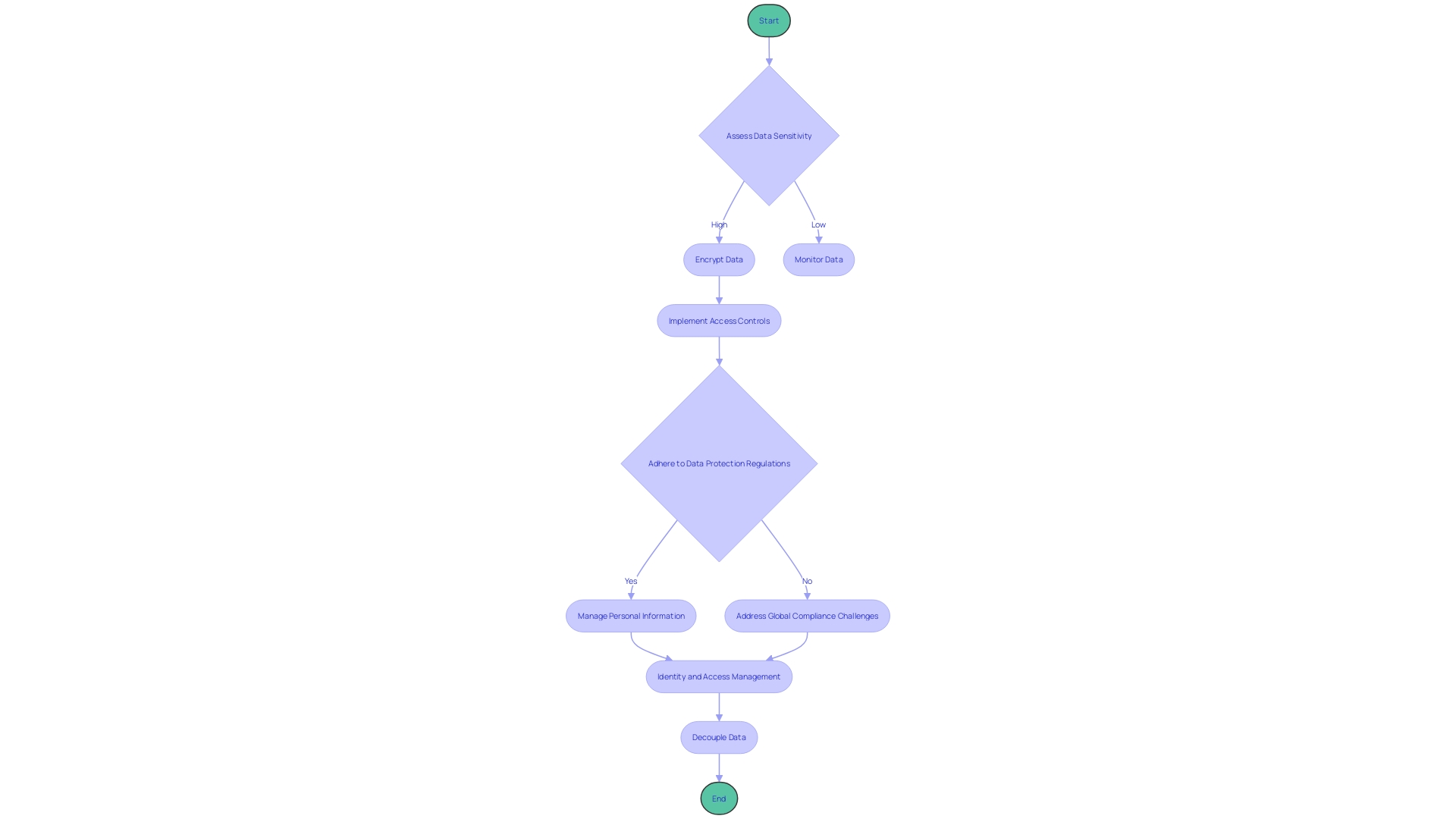Introduction
Cloud engineering has revolutionized the way businesses operate, offering a multitude of benefits that enhance scalability, agility, and cost savings. In today's fast-paced market, the ability to dynamically scale resources is crucial for maintaining a competitive edge. Additionally, the robustness of cloud infrastructures ensures consistent availability and performance, mitigating the risks of costly downtime.
Cloud engineering is not only transforming customer experiences but also streamlining internal operations, as seen in the case of Vodafone's reduction in launch team size. Furthermore, cloud solutions have the potential to optimize sustainability efforts, exemplified by Bosch's solid oxide fuel cell system. The realm of cloud engineering also presents vast opportunities for technology professionals, as their expertise in various cloud platforms and system development is invaluable.
The importance of cloud engineering is further highlighted by industry giants' investments in cloud computing, signaling its role in future growth strategies. In summary, cloud engineering reshapes businesses, redefines career paths, and fuels innovation in a rapidly evolving market.
Benefits of Cloud Engineering
Cloud engineering has become integral to modern business operations, delivering a suite of advantages such as enhanced scalability, agility, and cost savings. Businesses now have the ability to dynamically scale resources to meet fluctuating demands seamlessly, which is critical for maintaining a competitive edge in today's fast-paced market. Additionally, the robustness of cloud infrastructures ensures applications are consistently available and performant, mitigating the risks of downtime that can be costly to both revenue and reputation.
Taking a cue from Vodafone's transformation, it's evident that a strategic shift to cloud engineering can not only improve customer experience by offering services around the clock from any location but also significantly streamline internal operations. For instance, cloud architecture has enabled Vodafone to reduce the manpower needed for a product launch from 20 people working tirelessly to a more efficient team of five.
Moreover, companies like Bosch have leveraged cloud engineering to advance sustainability efforts. The digital twin technology supporting Bosch's solid oxide fuel cell system exemplifies how cloud solutions can optimize performance and cost-efficiency over the lifespan of a product.
In terms of human capital, the cloud engineering realm opens up vast opportunities for professionals. Cloud engineers are pivotal to the deployment and development of cloud-based systems, which are central to a company's digital strategy. Their expertise in various cloud platforms, coupled with their ability to develop systems that enhance collaboration and streamline processes, is invaluable.
An illustration of the cloud's transformative power in organizational efficiency can be seen through IFCO's collaboration with Rackspace Technology. The partnership has allowed IFCO to leverage Rackspace's extensive experience, leading to insightful and customer-focused cloud solutions.
Recent developments in the cloud space, such as Oxide's launch of a commercial cloud computer, are reshaping the traditional infrastructure setup. This innovation provides enterprises the flexibility of cloud computing within their own data centers, signaling a shift towards more adaptable and noise-optimized server solutions.
The strategic importance of cloud engineering is also highlighted by Alibaba's $1 billion investment in technology, despite leadership changes within its cloud computing unit. Such moves by industry giants underscore the cloud's role in future growth strategies.
In summary, cloud engineering is not only reshaping how businesses operate by providing scalability, reliability, and efficiency but also redefining career paths for technology professionals and influencing sustainability initiatives. It stands at the core of digital transformation, enabling businesses to innovate and adapt to the ever-evolving market landscape.
Key Strategies for Successful Cloud Engineering
The key to successful cloud enablement lies in strategic planning and execution tailored to the demands of modern digital business. Instagram's meteoric rise to 14 million users in a year with a lean team of only three engineers underscores the power of keeping cloud architectures simple yet effective. Similarly, Vodafone's transition to cloud services transformed customer experience while streamlining their internal operations, reducing the launch team size from 20 to five.
In alignment with such examples, organizations must first delineate a clear cloud deployment roadmap, with well-defined steps and objectives. The correct selection of cloud models is also vital, ensuring scalability, robust security, and cost-efficiency meet the specific business needs. For instance, Bosch's deployment of its solid oxide fuel cell system, supported by a digital twin, exemplifies the synergy of cloud engineering and sustainability, highlighting the importance of adaptable and efficient cloud solutions.
To solidify cloud engineering frameworks, robust governance policies and service agreements are pivotal for ensuring compliance and data protection. As cloud technology evolves, incorporating advanced technologies like generative AI can significantly enhance the value derived from cloud adoption. However, studies reveal that less than half of organizations have embraced fundamental practices such as DevOps, indicating a gap in engineering effectiveness that must be addressed to unlock the full potential of cloud enablement strategies.

Assessing and Resolving Security, Privacy, and Data Residency Issues
The landscape of cloud engineering is fraught with concerns surrounding the safeguarding of sensitive information, adherence to privacy mandates, and data residency. For organizations to maintain robust security and compliance, they must implement stringent measures, such as data encryption and rigorous access controls, which are essential in preventing unauthorized data access. Addressing privacy concerns goes beyond technical measures, requiring strict adherence to prevailing data protection regulations and meticulous management of personal information.
Data residency is especially pivotal due to varying international laws that prescribe meticulous handling, processing, and storage protocols for customer data. A poignant example is Skyflow, an AWS Partner, which operates as a zero-trust data privacy vault. Skyflow highlights the challenges of global compliance, particularly when customer data in the EU is stored in a non-EU region, such as AWS's us-east-2 region.
As the digital landscape evolves, so do the tactics for managing data responsibly. In the past, engineers enjoyed unfettered access to data, allowing them to extract valuable insights and enhance system performance. This was instrumental in the growth of giants like Facebook, Google, and Amazon, the latter of which harnessed customer data to power its recommendation engines—a key driver of sales.
However, this unrestricted data access had its pitfalls, leading to significant privacy controversies.
Identity and Access Management is a cornerstone of secure cloud-native application design. It dictates who has access to what information and ensures proper synchronization with identity providers (IDPs). This is crucial whether the applications serve internal users or a broader customer base.
As stated by the Cloud Security Alliance, security should be a prime consideration at the very inception of cloud-native application development.
Moreover, it is becoming evident that the conventional approach to data security is outdated. As articulated in a poignant observation, data is not a monolith of ones and zeros; certain data is inherently sensitive and demands additional safeguards. This notion is reinforced by the concept of 'decoupling,' which advocates for the separation of data in motion, data at rest, and data in use, thereby enhancing both security and privacy.
This strategy is based on the principle of Least Privilege, ensuring that the exposure of data is minimized to reduce potential risks.

Integrating with Existing Enterprise Systems
Cloud enablement is not simply about adopting new technologies; it's about integrating them into the heart of existing enterprise ecosystems to unlock their full potential. The key to this integration lies in meticulously evaluating current systems to identify where cloud solutions can dovetail, enhancing both data flow and operational efficiency. This often means harnessing APIs, data connectors, or hybrid integration platforms to bridge the gap between on-premises systems and cloud-based applications, thereby ensuring a smooth data exchange.
For instance, Bosch's implementation of their solid oxide fuel cell system showcases the power of integrating advanced cloud management practices. Supported by a digital twin, the system not only delivers high-efficiency power but also allows for real-time monitoring and optimization of performance over its lifecycle, exemplifying the synergy between physical infrastructure and cloud innovation.
A multiprovider, multipartner strategy, like the one adopted by Satyendra Kumar, is vital for facilitating this integration, especially when it's paired with early collaboration and a focus on security. The creation of a Wikipedia-style playbook democratized data collection and information sharing, a testament to the importance of a unified approach.
Furthermore, Lincoln Financial's agile methodology in cloud adoption underscores the significance of flexibility in planning, blending automation with manual processes to meet business needs. This dynamic approach is essential for CTOs seeking to navigate the complexities of integrating cloud solutions while maintaining continuity with their established infrastructure.
As the demand for cloud services escalates, propelled by advancements in IoT, AI, and ML, organizations are recognizing that cloud computing is no longer optional but a fundamental component for operational success and market adaptability. With the cloud market expected to expand continuously, the integration of cloud solutions with existing systems is a strategic imperative that promises to drive innovation, efficiency, and competitive advantage.
Conclusion
Cloud engineering has revolutionized businesses, offering enhanced scalability, agility, and cost savings. The robustness of cloud infrastructures ensures consistent availability and performance, mitigating the risks of costly downtime. Cloud engineering streamlines internal operations and optimizes sustainability efforts.
Technology professionals play a crucial role in deploying and developing cloud-based systems, and industry giants' investments in cloud computing highlight its strategic importance.
Successful cloud engineering requires strategic planning, clear roadmaps, and the correct selection of cloud models. Robust governance policies and adherence to data protection regulations are crucial. Integrating cloud solutions into existing enterprise systems unlocks their full potential.
Collaboration, flexibility, and a focus on security are key in this integration process.
In conclusion, cloud engineering reshapes businesses, redefines career paths, and fuels innovation. It offers enhanced scalability, agility, and cost savings, while streamlining operations and optimizing sustainability efforts. Technology professionals play a crucial role, and industry investments highlight the strategic importance of cloud computing.
Successful cloud engineering requires planning, clear roadmaps, and the right cloud models. Integrating cloud solutions into existing systems is essential. Cloud engineering is a transformative force that enables businesses to innovate and adapt.
Unlock the full potential of your business with our expert cloud engineering solutions.




